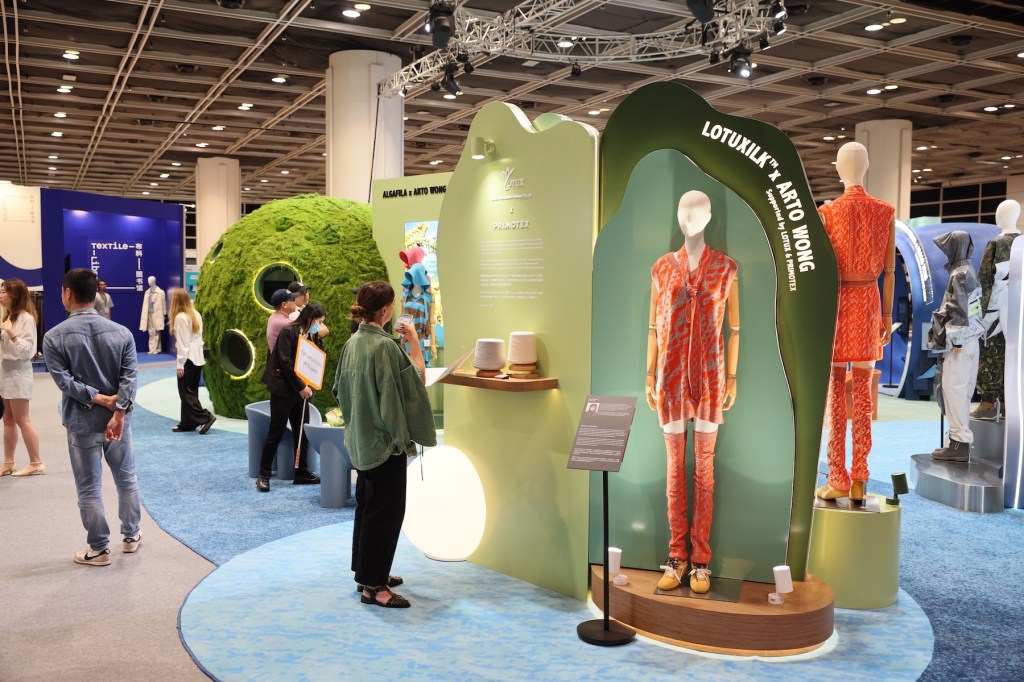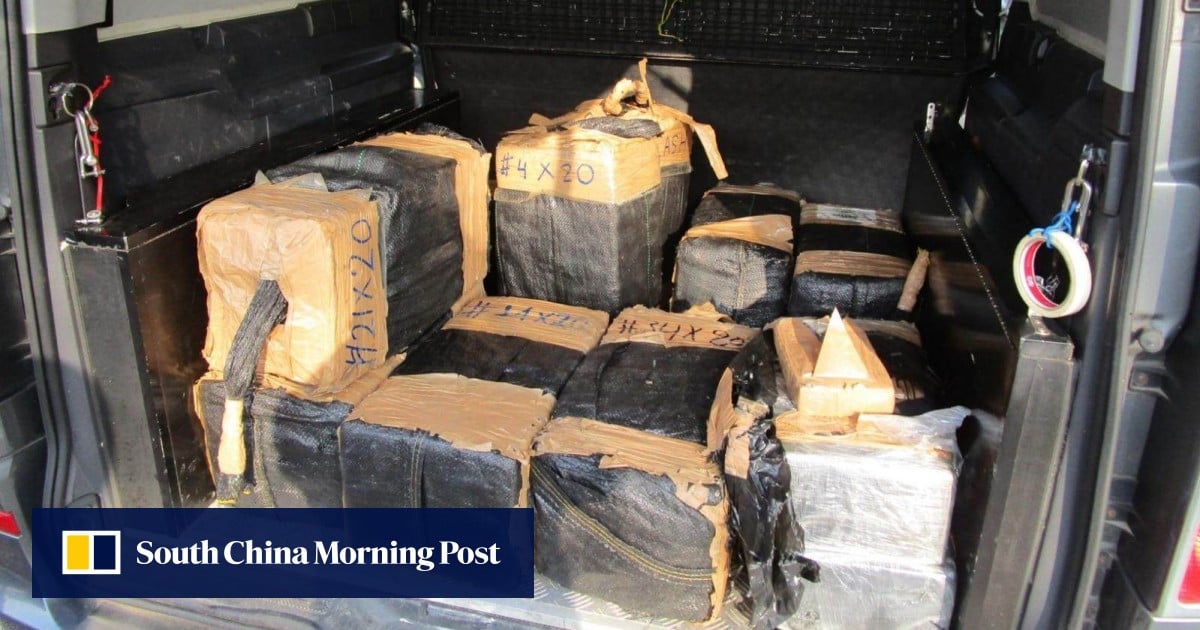As Hong Kong’s Fashion InStyle fairground wrapped up, attendance numbers underscored the Fragrant Harbour city’s international influence as a global trade platform.
Organized by the Hong Kong Trade Development Council (HKTDC), a statutory body established in 1966 to promote, assist and develop Hong Kong’s trade, the global show brought together some 400 exhibitors and drew more than 11,000 buyers. The holistic show, meanwhile, saw buyer numbers rise across all seven exhibitions, as some 100,000 buyers from 131 countries and regions were in attendance.
“Despite the current challenges in the global economic and trade environment, we actively attracted buyers to our fairs to enhance trade resilience and assist exhibitors in gaining a foothold in new markets such as the Middle East and ASEAN regions,” Sophia Chong, the HKTDC’s deputy executive director, said. “The HKTDC remains committed to promoting cross-sector and international trade cooperation among exhibitors, reinforcing Hong Kong’s position as an international trade hub and showcasing its unique advantage in building connections regionally and globally.”
The all-in-one sourcing platform debuted Next@Fashion InStyle: a zone dedicated entirely to (as the name implies) next-generation material innovation, funded by Hong Kong’s Cultural and Creative Industries Development Agency (CCIDA). Sixty innovators were invited to present “cutting-edge materials” in hopes of shaping global fashion trends, the statutory body said.
On top of those 60-plus exhibitors—including the likes of Intimiti Australia and Modern Synthesis—30 Thai exhibitors showcased materials merging culture with sustainability technology, as Thailand served as Next’s strategic partner, supported by the Thailand Creative Culture Agency (THACCA) and the National Soft Power Development Committee.
Han Chong, founder and creative director of Self Portrait, worked with the show to serve as this special edition’s ambassador. The designer mentored five local designers, including one of the British brand’s former interns, Hong Kong local designer Jason Ying.
“I see so much talent in [Ying]; especially coming from a very small city—having talented designers from [Hong Kong], it’s important for me to do my part to help them navigate this changing industry,” Han Chong said. “He was an intern in my office for a month and I feel like he’s got the quality—I see him as a very authentic Hong Kong designer.”
Intended to create a connective platform between material innovators and buyers, exhibitors and brands, Next (seemingly) saw success.
Take Malaysian buyer and the mind behind luxury label CollabStore, Richard Tsen. He connected with Indonesian exhibitor PT Miko Bahtera Nusantara (MYCL), intrigued by the B Corp, which is growing and building materials with agricultural waste and mushroom mycelia.
“I’m very interested in the company’s mushroom leather material and was amazed by its solidness and coating after the baking process; this inspired me to apply it to my designer label,” Tsen said. “I believe it has the potential to make a significant impact and resonate within the Malaysian and wider Asian market.”
“At Fashion InStyle, some exhibitors expressed an interest in establishing a presence in Hong Kong, using the fair as a platform to explore opportunities,” the HKTDC said.
The Hong Kong Trade Development Council (HKTDC)
Meanwhile, Mary Ma of Textile Library expressed “keen interest” in leveraging the opportunity to establish a base in Hong Kong. The Hangzhou-based nonprofit platform presented an innovation hub integrating traditional Chinese crafts—like the ancient folk embroidery art of Badu linen, beam printing and tie-dye techniques—with advanced materials.
“Hong Kong is a vibrant crossroads where eastern and western cultures meet,” said Ma. “It connects factories across Southeast Asia and attracts European and American buyers.”

“Upstream Circularity: Designing and Constructing a Closed-Loop System for the Fashion Industry” brought together experts, academics, suppliers and brand representatives to share innovative ideas and practical strategies.
The Hong Kong Trade Development Council (HKTDC)
Chinamind Next Interculture Group—the parent company of WWD China—shared similar sentiments, “recognizing the strategic advantages of Hong Kong as a gateway connecting the mainland with the world,” per the HKTDC. To that end, Chinamind and the statutory body signed a memorandum of understanding (MoU) during the fair and co-organized a panel seminar on upstream circularity.
During the half-dozen events held at the Hong Kong Convention and Exhibition Centre, the HKTDC surveyed over 1,500 exhibitors and buyers to discover what’s motivating (and menacing) the market.
Respondents identified womenswear (40.3 percent), urban clothing (39.1 percent) and fashion accessories (32 percent) as the market’s biggest bright spots. Nearly half of those on-site respondents (49.2 percent) expected their overall sales to rise in the next year or two, while 44.5 percent predicted stable sales. The top challenges were growing protectionist measures (45.7 percent), global economy fluctuations (43.3 percent) and the impact of inflation (32 percent).
In response to global trade challenges, exhibitors reportedly prioritized market diversification and were “actively pursuing” new customer acquisition. Longtime exhibitor Moral Team Holdings said Trump’s tariffs impacted 10 percent of the eco-friendly bag product developer’s export share, prompting an enhanced focus on the Asian market.
“Our mid- to long-term plan is expanding into the Australian and European market,” the Moral Team’s marketing and e-commerce manager, Charlotte Chui, said. “The concurrent fairs have attracted interest from fashion and houseware buyers. On the first day alone, we secured several orders from the Asian market and anticipate achieving total sales of over $500,000 at the fair.”
“The HKTDC remains committed to supporting exhibitors’ needs to help them upgrade and transform their businesses, while enhancing the overall quality of our exhibitions to provide a premier platform for cultural and creative design that can reinforce Hong Kong’s position as a leading regional creative hub,” Sophia Chong said. “This year’s lifestyle fairs [were] held together in late April to offer buyers a one-stop, diverse sourcing experience, helping industry players explore cross-sector and cross-disciplinary business opportunities and creating synergies.”


